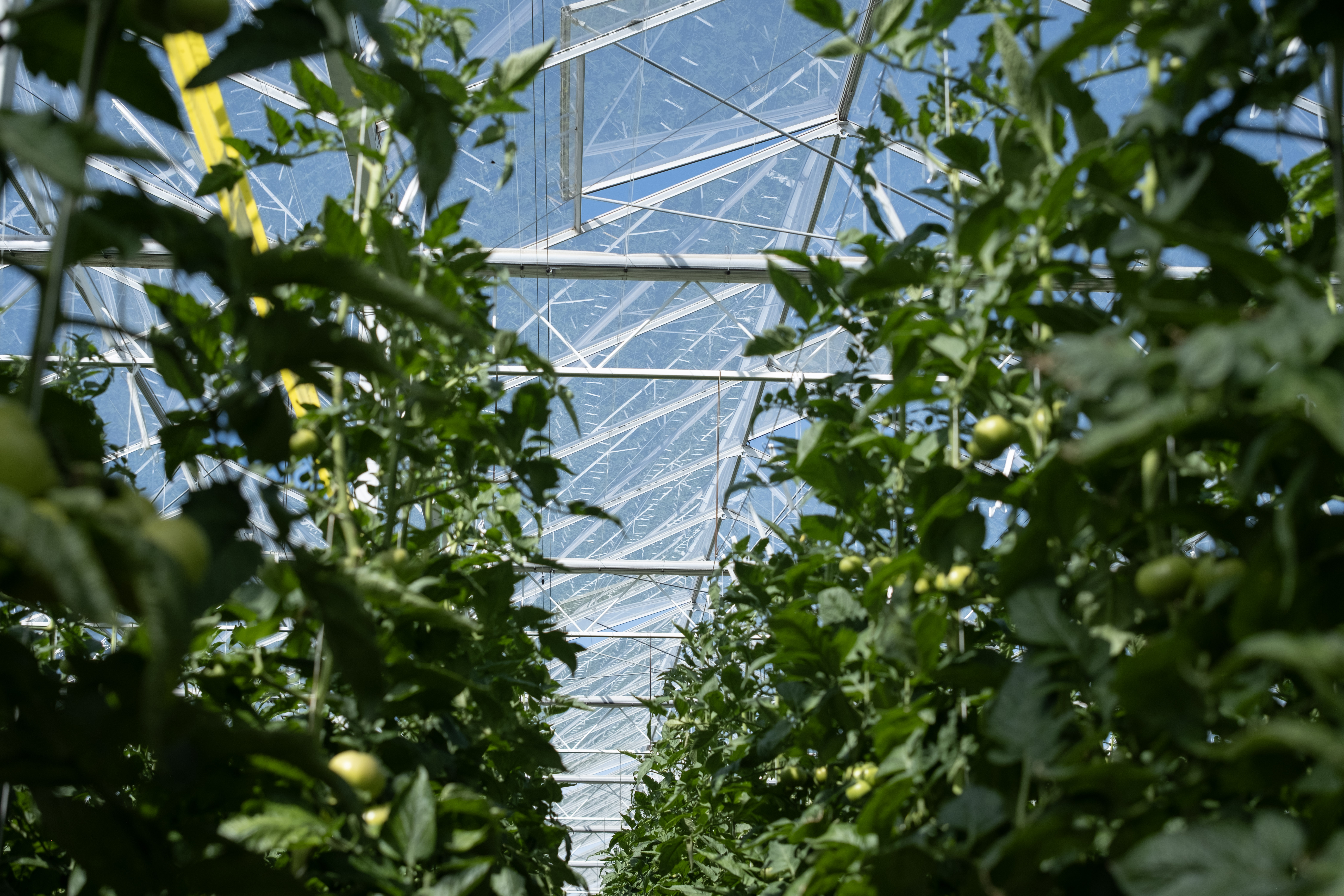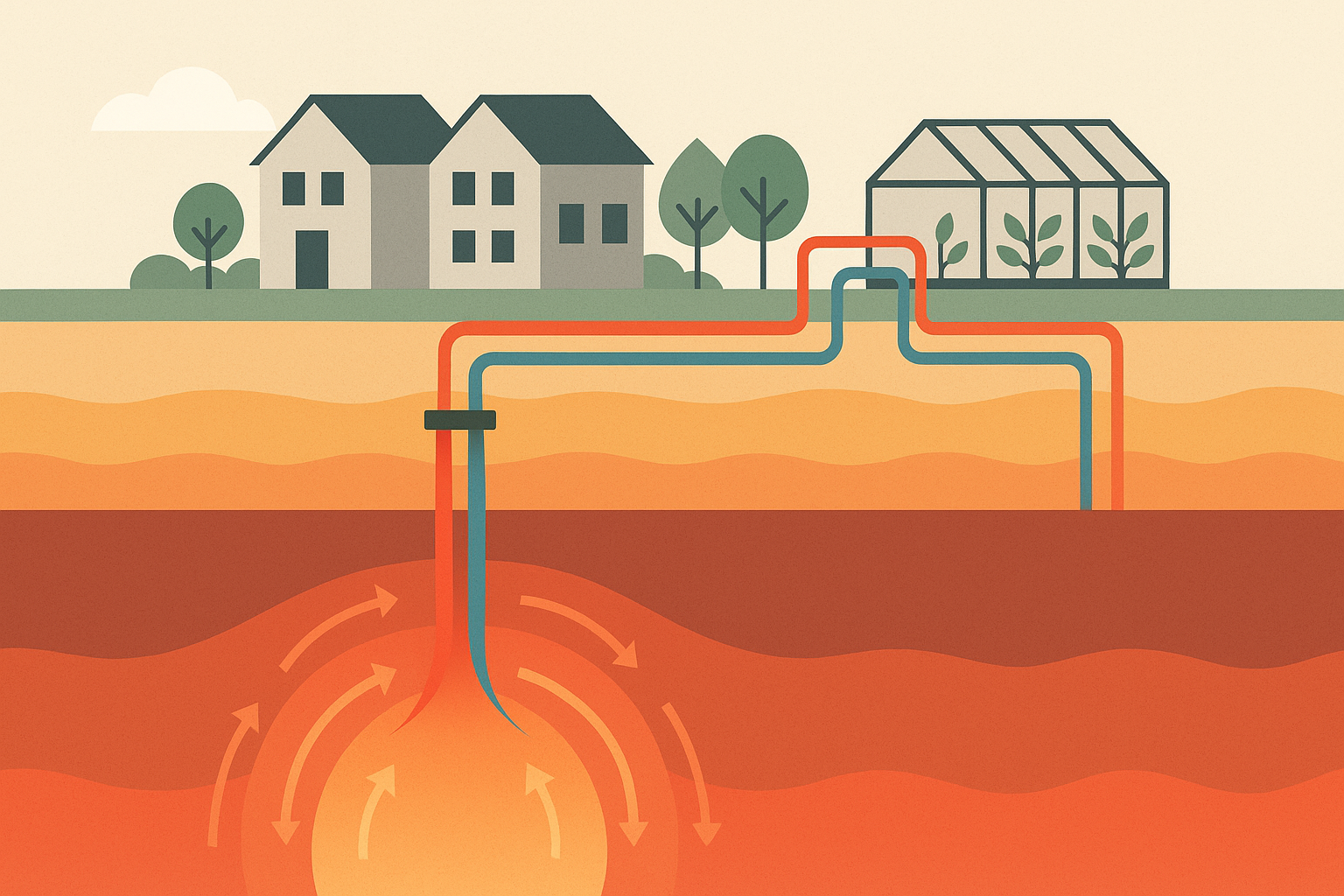What is geothermal energy and why is it the source of sustainable heat?

Geothermal energy in the Netherlands: sustainable heat from the subsoil
When we talk about renewable energy, many people immediately think of solar energy and wind energy. But there is another powerful source of clean energy deep beneath our feet: geothermal energy.
In the Netherlands, geothermal energy is rapidly becoming an indispensable pillar in the energy transition.
In this blog, you'll read:
- What geothermal energy is
- How it works
- Why it plays an important role in making our heat supply more sustainable
What is geothermal energy?
Geothermal energy is heat that is stored deep in the subsoil in aquifers of sand and rock. This hot water can be pumped up and used via a heat network to heat homes, offices, greenhouses and factories.
The system works in a circular way:
- The hot water transfers its energy to the heat network via a heat exchanger
- Then the cooled water flows back into the soil.
This is how geothermal energy provides Sustainable heat 24 hours a day, 365 days a year.
How exactly does geothermal energy work?
The Earth is naturally heated by processes in the Earth's crust. The decay of radioactive elements creates heat, which heats up the rocks and groundwater.
The process takes place in three steps:
- Through a production pit hot water is pumped up
- One heat exchanger transmits heat to a heat network
- It cooled water goes back into the underground via an injection well
This system is called a doublet and forms the basis of almost every geothermal project in the Netherlands.
What types of geothermal energy are there?
- Shallow geothermal energy (500 — 1,500 metres)
- Water of approximately 40 °C. A heat pump is often required to raise the temperature, sometimes immediately deployable.
- Conventional geothermal energy (2 — 3 km depth)
- The most used form in the Netherlands. Water from 70 - 90 °C, ideal for heating networks and greenhouses.
- Ultra-deep geothermal (> 4 km depth)
- Water above 120 °C. Suitable for industrial processes and heavier applications.
- High Temperature Storage (HTO)
- Excess heat in the summer is stored in the shallow subsoil (<500 meters) and used again in the winter.
Geothermal energy vs. geothermal energy
The difference lies mainly in the depth:
- Soil energy: up to 500 metres deep, around 30 °C, mostly warmed by the sun.
- Geothermal energy: from a depth of 500 metres, heated by the Earth's natural heat. On average, the temperature rises by 30 °C per kilometre.
Geothermal energy in the Netherlands: opportunities and benefits
More and more municipalities and companies are focusing on geothermal energy to accelerate the heat transition.
The benefits are great:
- Barely any CO₂ emissions
- Reliable delivery, 24/7
- Suitable for homes, greenhouses and industry
- Great potential: up to 26% of the heat demand in the built environment can be covered
Depending on its capacity, a geothermal source can 4,000 — 7,000 homes sustainable heating.
The key: cooperation between above and below ground
Making geothermal projects successful requires more than technology. There must be a well-functioning heat network and the entire heat chain - from manufacturer to customer - must work together.
This is the only way that geothermal energy can contribute on a large scale to the energy transition in the Netherlands.
Conclusion
At Gaia Energy, we believe that geothermal energy is a crucial role plays in a sustainable future. It is a silent force that is continuously available and helps to make the Netherlands more sustainable step by step.
Do you want me to have a abridged teaser version (100—150 words) create that you can use for a intro block on the homepage or overview page?



